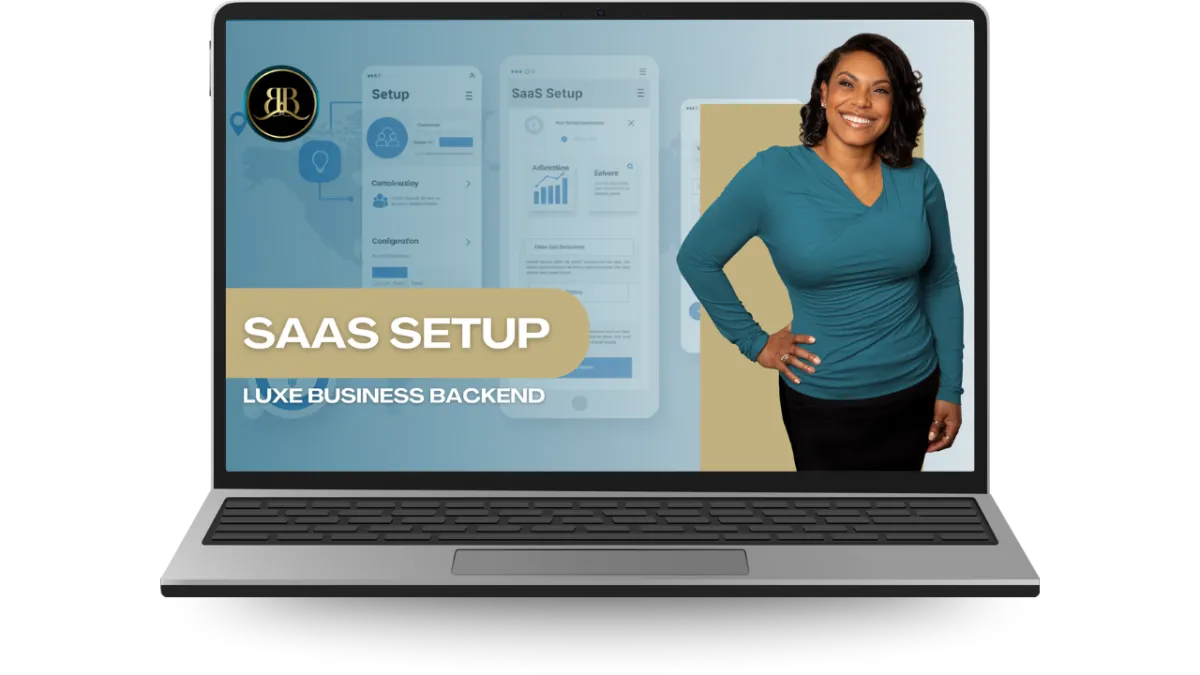
Burnout Isn’t a Mindset Problem
Let’s get this out of the way first:
you’re not burnt out because you don’t journal enough.
Or because you haven’t found your “CEO energy” yet.
Or because you didn’t visualize the right seven-figure timeline on your vision board.
You’re burnt out because your business is asking you to be its brain, its body, and its emotional support animal — every single day.
And that’s not sustainable.
But no one tells you that.
Because it’s easier to market “mindset” than it is to admit that burnout is often structural, not spiritual.
You didn’t build a business that burns you out on purpose.
You built it fast.
You built it while serving clients, launching things, chasing goals, wearing every hat — and somewhere along the way, your systems never caught up with your success.
You kept growing, but the backend stayed… patched together.
So now?
Every time a new client signs on, it feels like you’re rebuilding the process from scratch.
Your team means well, but somehow everything still falls on your shoulders.
You’ve automated a few things here and there, but it all still needs you to function.
You are the system. And that’s the problem.
Because what looks like burnout on the surface —
the brain fog, the resistance, the “I just need a break” spiral —
is really your body trying to tell you that the business is too dependent on you.
You don’t need a break.
You need a different way of operating.

Burnout isn’t always emotional.
Sometimes it’s just operational debt.
You’ve made it work.
You’ve been flexible.
You’ve kept delivering.
But flexibility only gets you so far before it turns into fragility — where every new client, campaign, or idea starts to feel heavy instead of exciting.
You’re exhausted not because you’re weak, but because you’ve been holding the entire business together with sheer willpower and a calendar full of Google Meets.
And let’s be honest:
you probably know what needs to change.
But fixing it feels like another full-time job.
So you keep saying yes to things.
Keep responding to Slack pings.
Keep tweaking your offer, hoping this version will finally feel lighter.
But nothing feels lighter because nothing about how the business runs has changed.
That’s the part no one talks about.
They’ll tell you to scale.
To hire.
To raise your rates.
But they won’t tell you that scaling on top of shaky workflows just makes everything heavier.
That hiring without process just turns you into a full-time manager.
That raising your rates doesn’t solve the root problem if your offer still eats your time alive.
Burnout doesn’t always come from doing too much.
Sometimes it comes from doing too much of the wrong things, in the wrong order, without a system to hold you.
So no — it’s not your mindset.
It’s not your motivation.
And it’s not your inability to “step into the CEO role.”
It’s that the way your business functions behind the scenes has not been built to support the version of you that exists now.
You don’t need to throw it all away.
You don’t need a sabbatical.
You need to rebuild the workflows that run your business — so it can start running without running you.
That might mean tightening up your offer delivery so it doesn’t depend on your daily involvement.
It might mean automating onboarding, scheduling, and follow-ups so your clients feel supported without 42 back-and-forth emails.
It might mean restructuring your internal ops so your team actually has what they need to lead — not just wait for your permission to move.
None of that’s sexy.
None of that’s going viral on Instagram.
But it’s the difference between a business that owns your time and one that gives it back.
And here’s what most people won’t say:
sometimes, the real flex isn’t making more.
It’s needing less from yourself to maintain what you’ve built.
So if you’re tired, it doesn’t mean you’re not cut out for this.
It might just mean your workflows haven’t evolved with your brilliance.
And it’s time to fix that — not with a new affirmation, but with a new infrastructure.
You deserve a business that feels light again.
One that supports you even when you’re offline.
One that delivers an exceptional client experience — without making you the experience.
One where the marketing happens, the money flows, and the team executes — because the workflows work.
That’s not about hustle.
That’s not about mindset.
That’s just smart, sustainable business design.
And if no one else has said it yet:
your burnout is valid.
But it’s not permanent.
It’s a signal — not a sentence.
And you’re allowed to rebuild from here.
If this hit a little too close to home — don’t just sit with it.
“Why Your Business Feels Heavy (And What to Fix First)”
and start identifying the exact areas that are burning you out behind the scenes.






